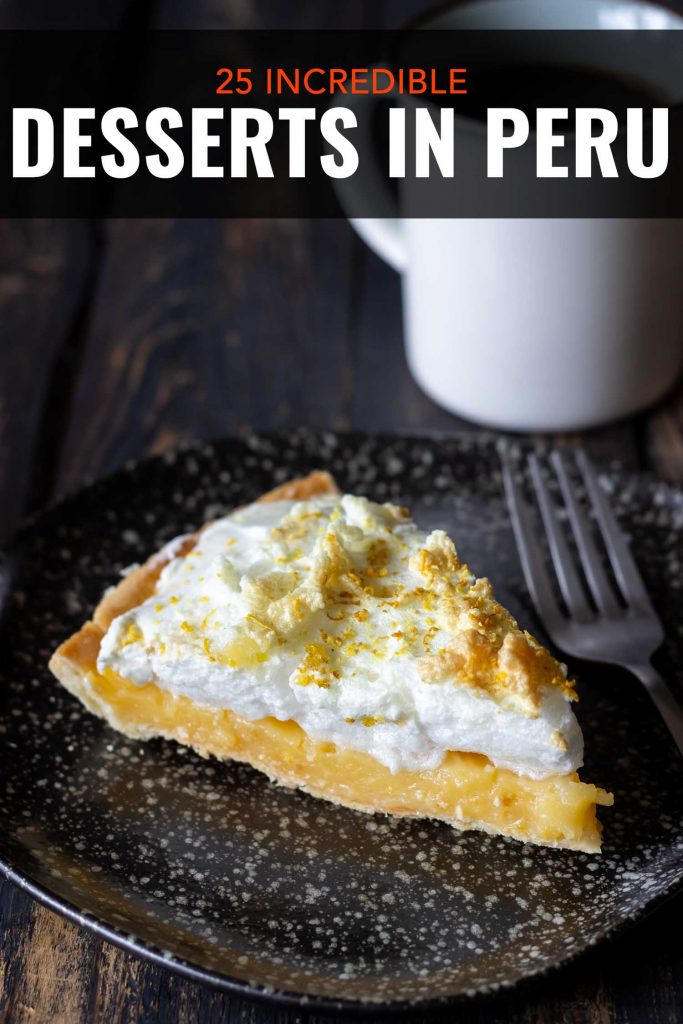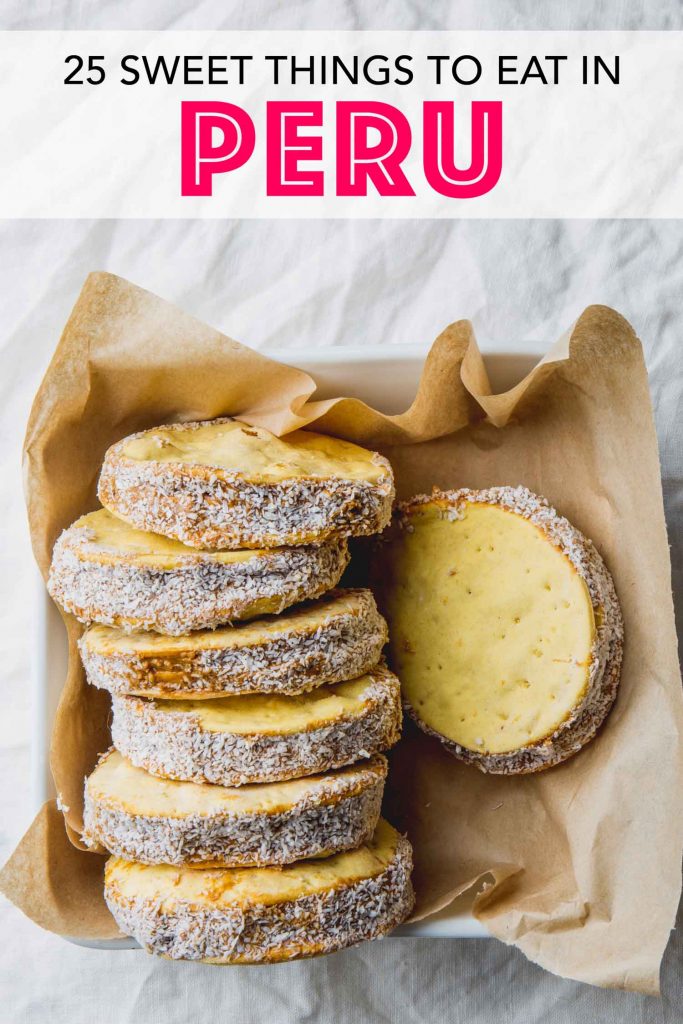These Peruvian desserts will change your mind about food in Peru.
One of my biggest issues about people talking about Peruvian food is that it’s often a discussion about ceviche or pisco sour.
Its like a country as large and as old doesn’t have more to offer than a cocktail or fish cooked in lime juice.
But when you begin to point fingers it eventually comes back to you.
Because I realized other than Peruvian chicken, I haven’t shared much about Peruvian cuisine – and certainly not much about Peruvian desserts.
Whoops.
And while I don’t have a sweet tooth it didn’t hold me back from trying desserts in Peru because they have so many that range from sickeningly sweet to the kind even dessert haters will like.
And Peru has so many culinary influences. Not only the Incan and other indigenous populations, but those who came from China and Japan.
And then of course there’s the Spanish conquistadors and the colonial times when the Germans and Italians who also came looking for new opportunities in the gold and silver trade
And Peru became like a stereotypical melting pot taking the best from different countries and making it uniquely Peruano.
25 Peruvian Desserts

Alfajores
I was surprised to see Alfajores in Peru because I had always assumed that they were an Argentinean food and did not exist elsewhere in South America.
Maybe the world’s most delicious sandwich cookie?
The key is the filling between the two cookies. It is known as manjar blanco in Peru and dulce de leche in Argentina and other countries.
Alfajores are decendants from the Arabic sweet alajú which were brought to Spain from North Africa by the Moors.
In fact many of the Spanish sweets we know are actually Arabic in origin as Spain was ruled by the Moors for 800 years.
When the Spanish conquistadors made their way to Latin America they did not bring the traditional ingredients of almonds and honey for this sweet.
So instead they improvised with local ingredients.
Champús
A fruity dessert in Peru, you can also find in Ecuador and Colombia.
Although in Colombia it has morphed into a drink and it is very common at Christmas.
23 Delicious Drinks in Colombia
While it’s pronounced like shampoo it tastes nothing like it. It comes from an ancient word from the Quecha people – champusca.
And that is not surprising because it’s literally a mixture of different fruit and corn/mote. In Lima it is very common during Christmas and winter months where it is served warm from food vendors.
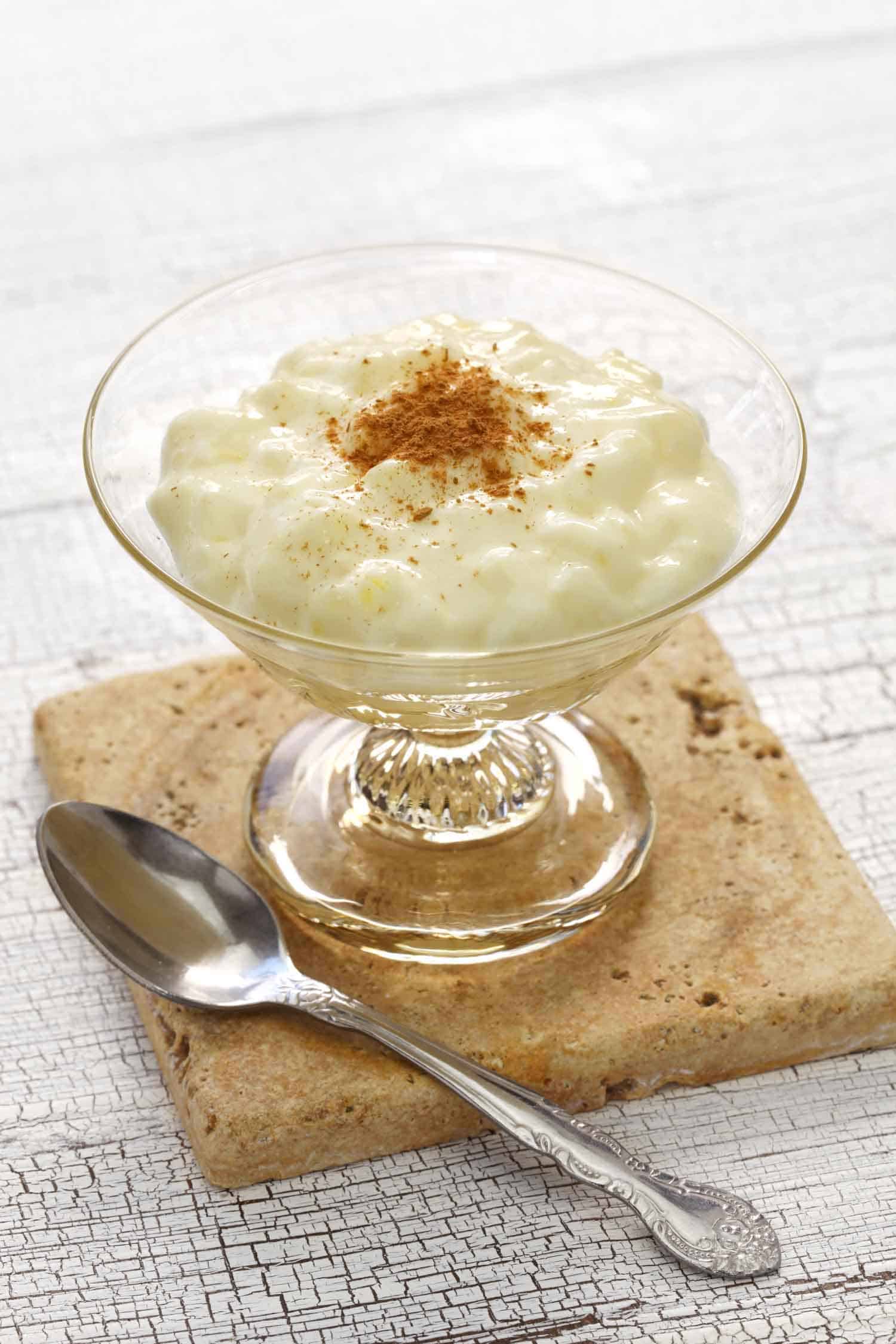
Arroz con leche
Another dessert in Peru that was brought by the Spanish. Nearly all Latin American countries have some version of rice pudding, it’s one of the most popular Honduran desserts and Peru is no different.
But it’s not surprising because it makes use of readily available ingredients and so it’s accessible for everyone.
Arroz con leche is on most Peruvian dessert menus. While it’s very popular I find it entirely too sweet.
It’s a mix of rice, evaporated milk and condensed milk, which is cooked until it has a mushy like texture.
It is often topped with cinnamon and sometimes raisins.
Arroz Zambito
If you like rice pudding you’ll love this variant, which is a bit more rustic.
It’s a darker colour because it uses chanaca syrup, which is a common syrup in Peru made from sugarcane. In Colombia you would know it as panela.
From colonial times, the rice is cooked with milk for a creamy texture and it has a stronger, earthier flavour as it uses aniseed, coconut flakes and raisins. It’s often topped with pecans.

Cocadas
One of the easiest Peruvian desserts to make, and similar to cherry balls, cocadas are simple coconut macaroons.
They are very common on the coastal areas of Peru, where coconuts are cheap and plentiful.
They are sold on the street and are varying sizes.
And they are quite similar to one of the most popular Nicaraguan desserts called cajetas de coco.
While the traditional cocadas recipe is grated coconut with sugar, you can find more artisanal ones in cafes that treat the Peruvian sweet like an alfajore with manjar blanco or even Nutella as a filling.
Encanelado
One of the lesser known Peruvian desserts, it is essentially a layered cinnamon cake.
Some say encanelado is originally from Costa Rica. Others say Spanish nuns brought it to Peru. It could be a combination of both.
In Peru there is a tradition that many of the convents and some monasteries were known as being specialists in making specific desserts in Peru.
It’s quite easy to assemble as it uses local ingredients. It’s a layered cake with manjar blanco in between and it is soaked in a sugar syrup with a tiny bit of pisco in it.
Not enough to my liking!
Tarta Helada
Although this translates to ice cream cake, it’s not quite that in Peru.
It’s best described as a layered cake with a strawberry Jell-O mold on top.
And it is strange because it looks straight out of the 1980s. You can expect strawberries encased in red Jell-O with layers of cake and whipped cream.
The gelatin top may not may not have strawberries or other red fruit in it.
If you see it you almost have to try it because it will remind you of the 80s.

Coconut Sweets
These are really cheap sweets often sold on the coast of Peru. It’s simply coconut and unrefined sugar.
But I like to keep them on hand for low blood sugar moments, like when that bus ride was supposed to be one hour but is somehow two!
Suspiro de Limeña
This may be one of the most famous Peruvian desserts. It is certainly considered THE dessert of Lima.
I think it’s also one of the most romantic stories. It was created by Amparo Ayarza named who was the wife of the famous poet Jose Galvez.
He named the Peruvian dessert “sigh of a woman from Lima” because it’s both light and also sweet like a woman’s sigh.
Today it is very common in Lima and is perfect if you are traveling alone! Because it’s usually served in individual bowls or individual dessert stemware.
You have to like manjar blanco for this one because it’s basically caramel cream topped with a light meringue and dusted with cinnamon and port wine.
Sometimes you may see it called suspiro limeño, which is a Lima Sigh but it doesn’t have the same romantic feeling.
And it is also different than the popular Ecuadorian desserts called suspiro.
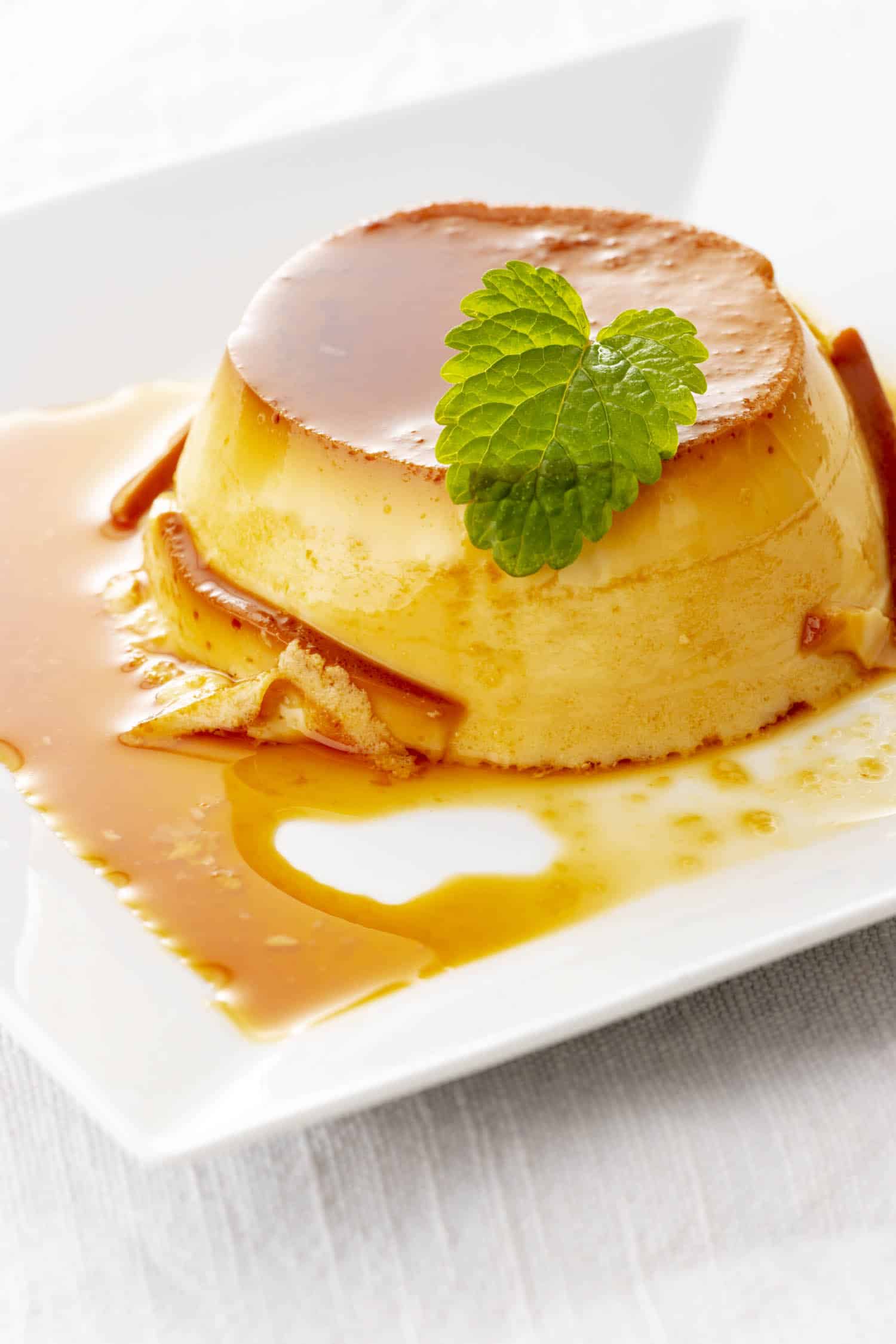
Crema Volteada
If there was one dessert that you could find all around the world, I’m convinced it would be creme caramel aka flan.
Names for Flan Around the World
- Bánh flan and kem flan in Vietnam (North and South respectively)
- Crema caramella in Italy
- Crema catalana in the Catalan region of Spain
- Crème caramel in France
- Leche flan in the Philippines
- Purim in Japan and Taiwan
- Pudim in Portugal and Brazil
- Quesillo in Venezuela
And of course my absolutely favourite is flan Cubano. It’s one of the few dishes I think Cuba does better than Mexico.
Cuban Flan
The name translates to “upside down cream” and it was definitely brought by the Spanish. The Peruvian recipe for flan custard can vary as it may include egg yolks, whole milk or condensed milk, and there are lots of additions from raisins to quinoa.
I like flan because it’s sweet but not too sweet.
Leche Asada
Leche asada is somewhere in between a crema volteada and a crème brûlée.
My own theory is that they were trying to make a crème brûlée and needed to adapt to local ingredients and cooking methods.
A traditional flan is usually cooked in a water bath. In this case a leche asada, which means roasted milk, is baked in the oven.
It uses heavy cream or evaporate milk, eggs and sugar. When baked the top gets crispy and the interior stays creamy.
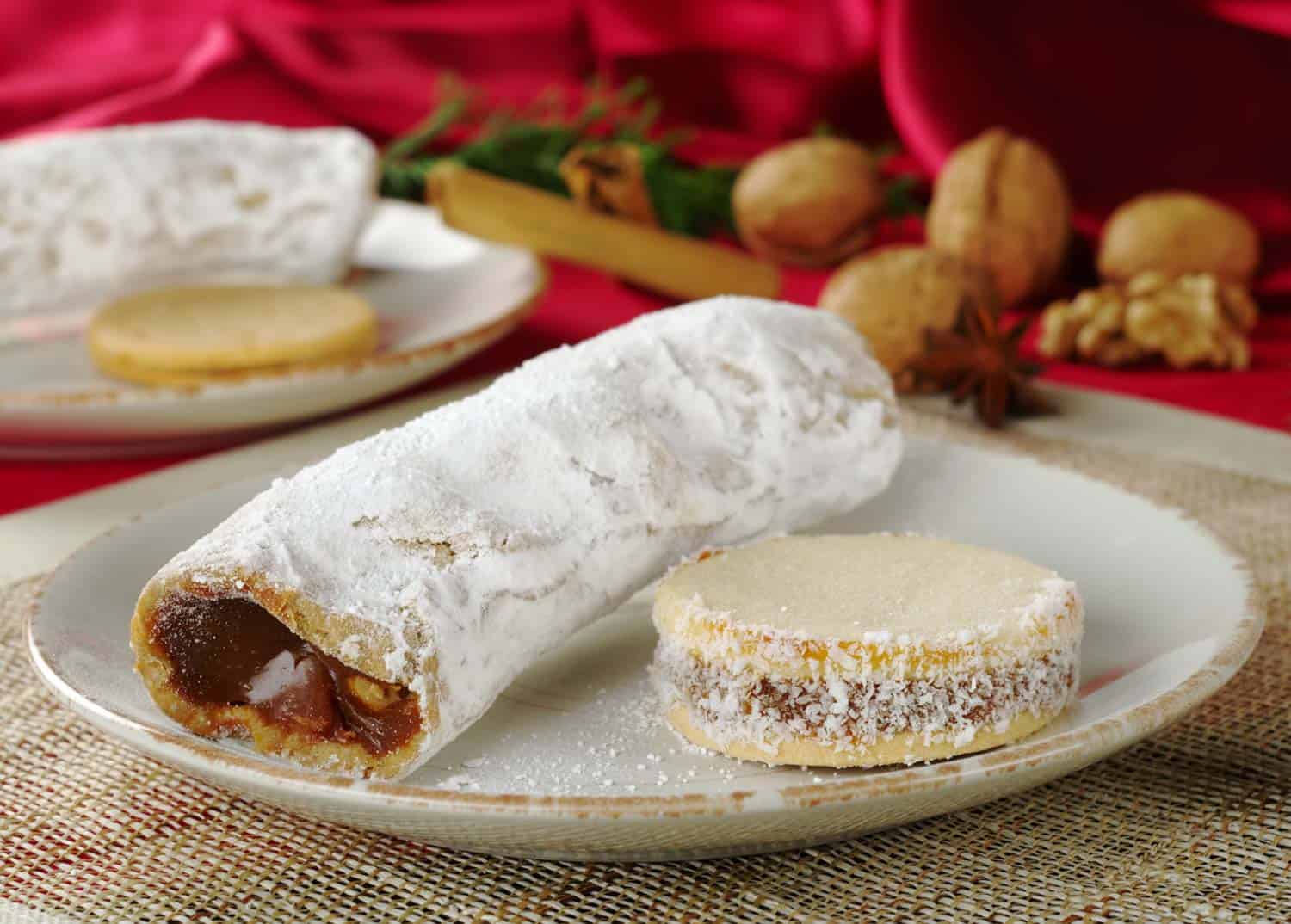
Guargüeros
Another great example of de convento sweets in Peru. Some people like to call this the Peruvian cannoli and I think that’s pretty accurate.
This dish is from the colonial times and are fried pastries filled with manjar blanco and topped with sugar.
And there’s usually a bit of pisco in the dough – just because there’s always a bit of pisco in Peruvian desserts.
They are most common in southern Peru but really you can find guargüeros almost anywhere in Peru.
Because who doesn’t love a fried dough dessert?
Lúcuma ice cream
The lúcuma is a fruit best translated to egg fruit in English, because the flesh looks and feels like an egg yolk.
But don’t stop reading because that doesn’t sound appetizing!
You absolutely need to try it though. Because this Peru fruit isn’t found all over South America.
It only grows in the highland jungles in the Andean valley in Peru and Chile.
Thankfully it doesn’t taste like egg. It’s most like a sweet potato or pumpkin with vanilla, maple, clove and cinnamon. It is SUPER popular in desserts in Peru.
Lúcuma ice cream is popular in summer. If you can’t eat dairy then look for the street vendors selling freezies known as marcianos as you can bet they’ll have lúcuma flavour.
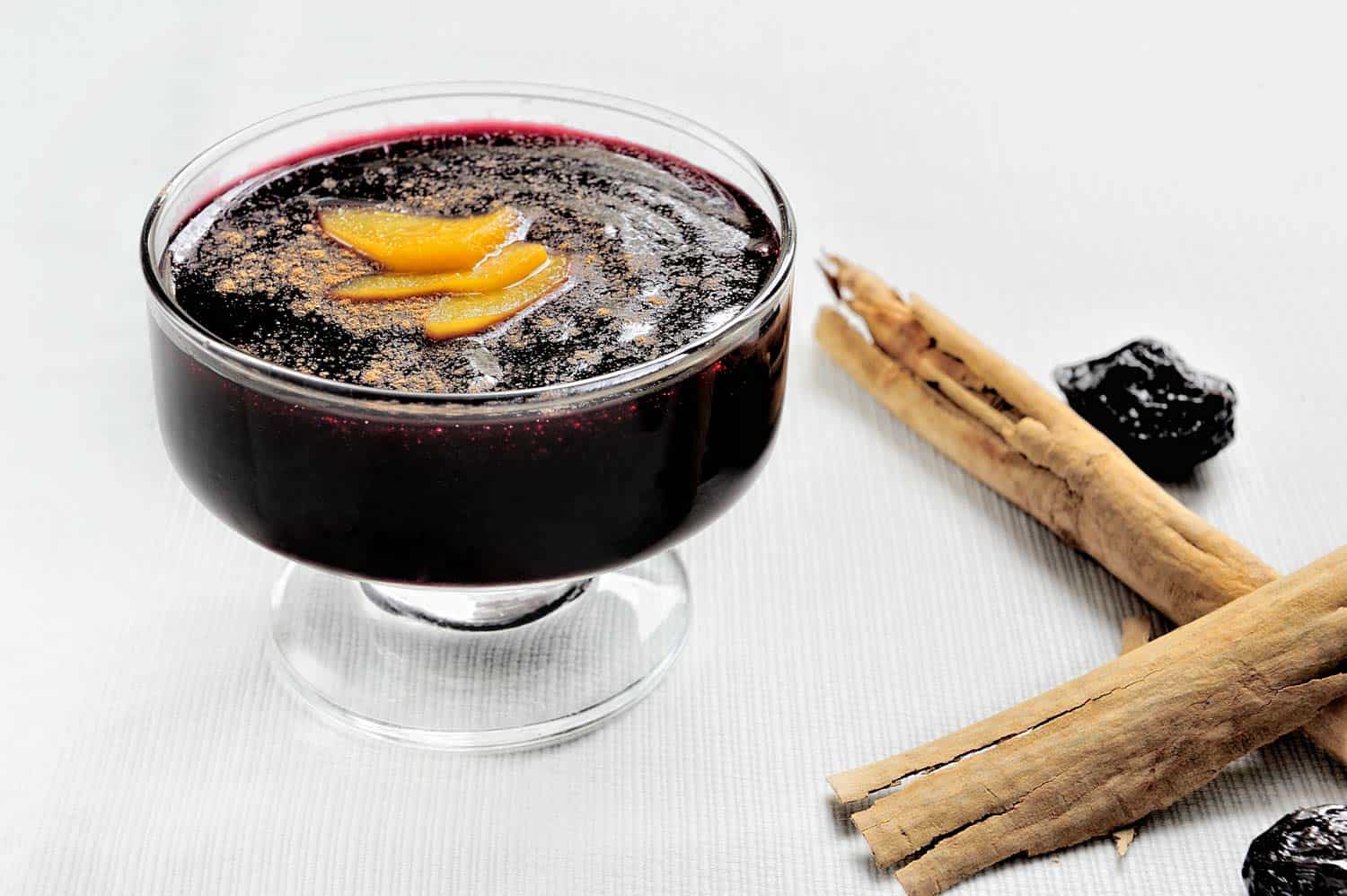
Mazamorra Morada
One of the things I love about Peru is that they use morada, or purple corn, in so many dishes both savoury and sweet – and even drinks like chicha morada.
Mazamorra is a corn based dish that is based on an Arabic dessert but uses local ingredients. You can find it in other South American countries – but it’s not this vibrant purple. I love it.
It’s most often a colder weather pudding dish that uses all the warming spices of cinnamon, clove and baked warm fruits like pineapple, apricot or apples amongst others.
The flavour is fantastic, the texture can be debatable as it uses potato flour or corn starch to thicken it so it’s most a jelly instead of a pudding.
Served at room temperature you’ll find it everywhere from street vendors to fine dining restaurants in Peru.
Peruvians believe the colour and warm flavours help get them through the colder times. It’s also very popular during easter.
Pionono
Basically a rolled up sponge cake filled with manjar blanco. This isn’t just a Peruvian dessert but also common Filipino food.
As well, you can find variations in Spain, Granada and other South American countries.
And for good reason too. Pionono is named after Pope Pius IX. His Italian name is Pio Nono.
But Peru is the only version is manjar blanco. Otherwise you can find it rolled with fruit jam and other fillings.
It is an easy dessert recipe and often served with coffee.
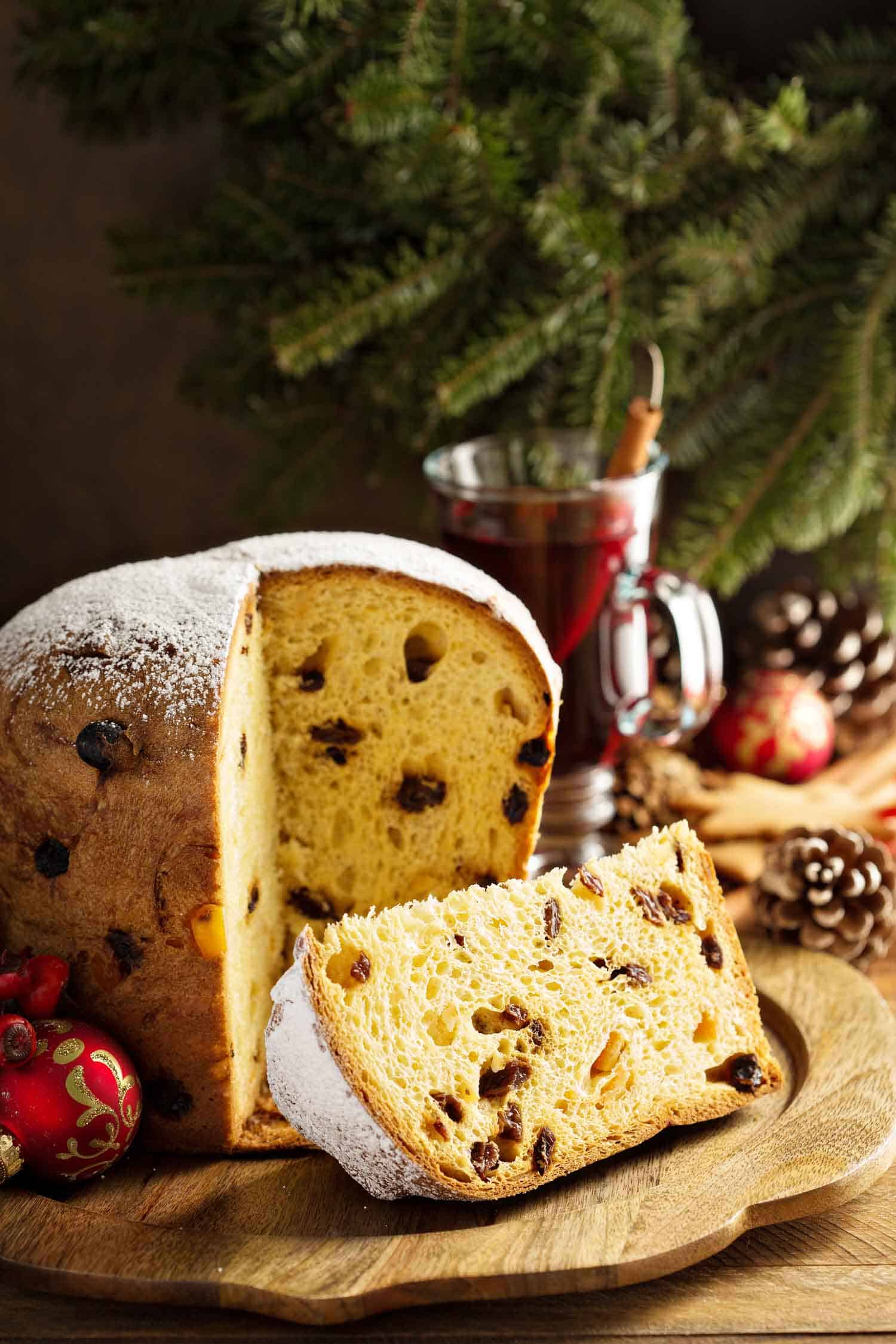
Panettone
The panettone may be one of the most famous Christmas desserts. It is originally a northern Italian dried and candied fruit bead.
But it is so beloved it made its way to Spain where it is known as panetón.
This adopted Peruvian dessert came by way of Italian immigrants, who quietly influenced a number of Peruvian foods, yet are often overlooked in culinary history.
One of the unique aspects about panettone in Peru is that it also uses candied papaya.
If you’re not in Peru at Christmas don’t worry, it is considered a celebration cake and appears at many holidays including Peruvian independence Day on July 28.
King Kong
Peruvians love their cookies and there are so many sweets that are very regional.
King Kong are from the Lambayeque region of the northern coast of Peru.
They have Peruvian blancmange, manjar blanco, peanuts and marmalade of usually strawberry or pineapple.
King Kong are commercial cookies that were inspired by Alfajor de Trujillo, a city in the north. They are named after the movie King King because Peruvians thought the size was so large it resembled the character.
They can appear as a rectangular tower to be shared or smaller round version. More on it here.

Picarones
Every good culinary country has a type of doughnut or fritter and these are one of the easiest Peruvian desserts to find.
They do have a spin on them making them uniquely from Peru as they are made with sweet potato and squash and then topped with chancaca, which is raw sugar cane syrup.
If you’re lucky the syrup will also have a bit of orange and cinnamon on it.
This is a very common sweet street food in Peru and so it’s inexpensive to try.
It’s common to find the vendors next to those selling anticuchos or skewers with beef heart, as people tend to combine the two.
It makes for a very affordable dinner and dessert.
This is another dessert popularized by nuns, particularly those of the Saint Claire’s convent. And so it is common to find picarones during religious holidays and festivals.
Ranfañote
There are several Peruvian desserts that are held to great debate to who can claim the accolades for the recipe and ranfañote is one of them.
Some say that the Incas created it after beginning to use sugarcane. Others believe that Afro-Peruvian slaves created it using sugarcane on the small portions of food they had.
Others say it was created as ration food for soldiers when Peru found Chile in the War of the Pacific.
Any of these theories are valid because it’s a bread pudding made with stale bread, nuts, cheese, fruit and chancaca brought together with spices.

Pie de Límon
A traditional lemon meringue pie is not one of the oldest Peruvian desserts but it does have its place in history.
It was brought to Peru by immigrants but as lemon isn’t a typical ingredient in Peru, pie de limon uses limon, which are small acidic limes.
Similar to key limes, it does give the pastry a unique taste. And like the original it is topped with a meringue.
Torta de Chocolate
Yes Peruvians love chocolate cake too!
What makes it different is that it uses Peruvian cacao. If anything that’s a great reason to eat cake.

Tres Leches
One of the most common desserts throughout Latin America, tres leches means three milks.
It’s a simple dessert in Peru made with sponge soaked in whole milk, evaporated milk and sweetened milk.
Make you sure only take a small slice but this cake is very dense and quite filling.
Chapanas
Best described as a sweet tamale or humitas, chapanas come from the Quechua word chapuni, which means to knead.
Chapanas are an ancient Peruvian dessert that come from the coastal region. They are made with cassava mixed with sweet chancaca, cinnamon and cloves and wrapped in a banana leaf.
It is most common to see these sweets sold in markets.

Turrón de Doña Pepa
One of the most colourful desserts in Peru. And there’s an equally colourful story to go along with it.
You can buy it all year round but it’s very special in October in Lima as it’s known as El Mes Morada or The Purple Month.
Many wear purple robes and march to a chapel in the centre of Lima to honour El Señor de Los Milagros who is The Lord of Miracles”.
Here they pray to an image of Jesus, as it has a history of granting many miracles.
This cake was created by an Afro-Peruvian slave from Cañete Valley who once visited. Josefa Maraminillo’s arms were paralyzed.
Because she could not work, she was set free from slavery. But without the ability to use her arms she could not support herself.
She participated in the prayers for the month and walked the procession to ask for help. After praying to the image she was miraculously healed.
To show gratitude she made this turrón and offered it to other faithful visitors. It became a tradition for the procession and was later named Doña Pepa.
It is customary to give free samples to those who come to worship during this time.
Doña Pepa says the saints gave her the recipe in a dream. It is a layered cake flavoured with anise, drizzled with chancaca syrup and topped with vibrant candies.
Frejol Colado
One of many dishes originating from Afro-Peruvians in the southern cities, specifically Cañete and Chincha. It is hundreds of years old.
It was originally a traditional dessert for Easter but you can find it now all year long.
One of my favourite Peruvian desserts because I adore black beans. I like to think of it as the black bean version of arroz con leche.
It’s a black bean pudding cooked with sugar and milk and topped with cinnamon. Unlike Peruvian rice pudding it’s pureed and also topped with sesame seeds.
What Peruvian desserts did I miss? Let me know in the comments below!
Pin it For Later: Desserts in Peru
